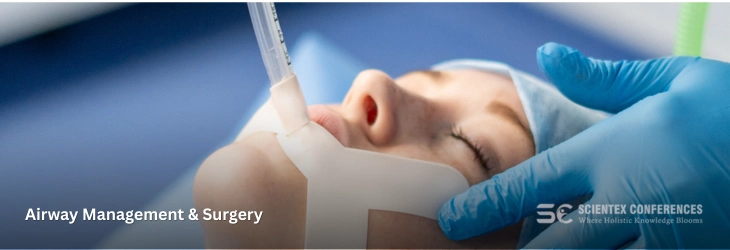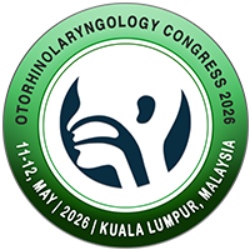Track: Airway Management & Surgery

Session Overview:
This session aims to provide a comprehensive understanding of airway management and surgery, focusing on techniques to secure and maintain a patient’s airway in both emergency and planned surgical settings. It will cover various methods of airway control, including intubation, tracheostomy, and ventilation strategies, as well as surgical interventions for airway obstruction caused by trauma, tumors, or congenital abnormalities. The session will emphasize the importance of timely decision-making, multidisciplinary collaboration, and the use of advanced tools and technologies to ensure patient safety and optimize respiratory function.
Recent Developments:
Recent advancements in understanding and managing airway management and surgery have greatly enhanced patient safety and treatment outcomes. Innovations such as video laryngoscopy and fiberoptic bronchoscopes have improved visualization during intubation, making airway access safer and more efficient, especially in difficult cases. Minimally invasive surgical techniques and advancements in tracheostomy procedures have reduced complications and recovery time. Additionally, the development of personalized airway management protocols and simulation-based training has improved clinician preparedness for complex airway scenarios. These developments, combined with better monitoring and ventilatory support technologies, continue to advance the field and optimize care for patients with airway challenges.
Sub Tracks:
Airway Obstruction:
Airway obstruction occurs when the flow of air through the respiratory tract is partially or completely blocked, causing breathing difficulties. It can result from trauma, infections, tumors, or congenital abnormalities and requires prompt evaluation and management to ensure adequate oxygenation.
Tracheostomy:
A tracheostomy is a surgical procedure that creates an opening in the neck to place a tube directly into the trachea to assist with breathing. It is often performed for prolonged airway obstruction, respiratory failure, or when long-term ventilation support is needed.
Laryngomalacia:
Laryngomalacia is a congenital condition characterized by the soft, floppy tissues above the vocal cords collapsing inward during inhalation, causing noisy breathing in infants. Although often self-resolving, severe cases may require surgical intervention to improve airway patency.
Subglottic Stenosis:
Subglottic stenosis is the narrowing of the airway just below the vocal cords, which can be congenital or acquired due to injury or prolonged intubation. It may cause breathing difficulties and often requires surgical correction to restore normal airway function.
Vocal Cord Paralysis:
Vocal cord paralysis occurs when one or both vocal cords lose movement due to nerve damage, leading to voice changes, swallowing difficulties, and potential airway compromise. Treatment depends on the cause and severity, ranging from voice therapy to surgical procedures to improve airway protection and voice quality.
Laryngotracheal Reconstruction:
Laryngotracheal reconstruction is a surgical procedure aimed at widening the narrowed segments of the larynx and trachea to improve airflow. It is commonly used to treat severe subglottic stenosis and involves techniques like cartilage grafting to restore airway patency.
Scientific Highlights
- Anatomical and Physiological Disorders of ENT
- Lung Disease Airway Issues
- ENT Infections and allergies
- New treatment Advances in Otolaryngology
- Ear & Nose plastic surgery
- Endoscopic and laparoscopic ENT surgery
- Craniofacial & Facial surgery
- Otology and Neurotology
- ENT Microsurgery
- COVID 19 and ENT
- Pediatric Otolaryngology
- Speech and Swallowing Disorders
- Head and Neck Surgery
- Airway Management & Surgery
- ENT Allergies & Immunotherapy
- Surgical Techniques in ENT
- Nasal Polyposis and Biologic Therapy
- Advances in Cochlear Implants
- Recent Advances in Otorhinolaryngology
- Vertigo and Balance Disorders


